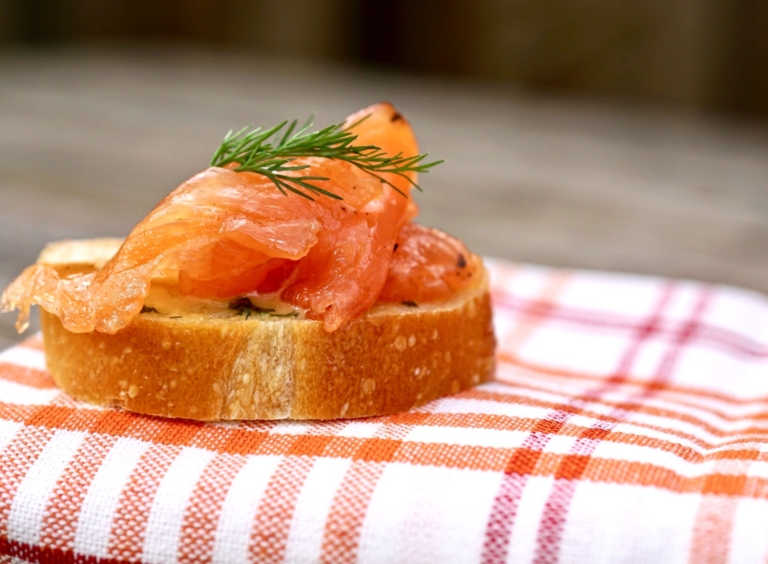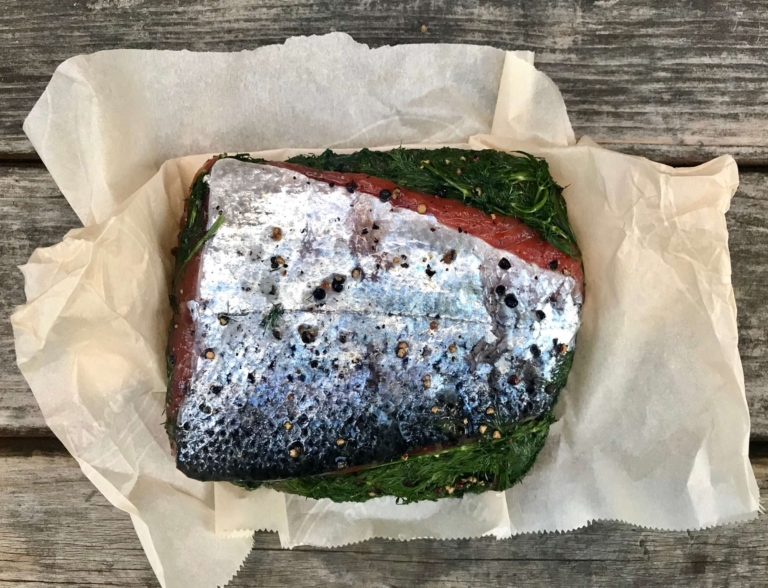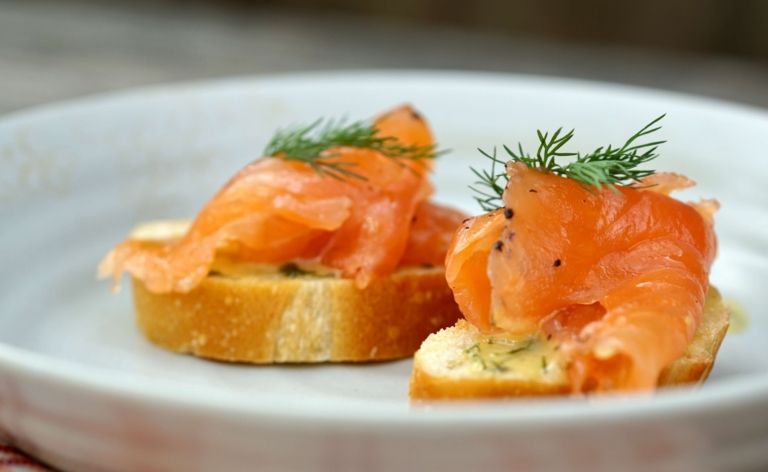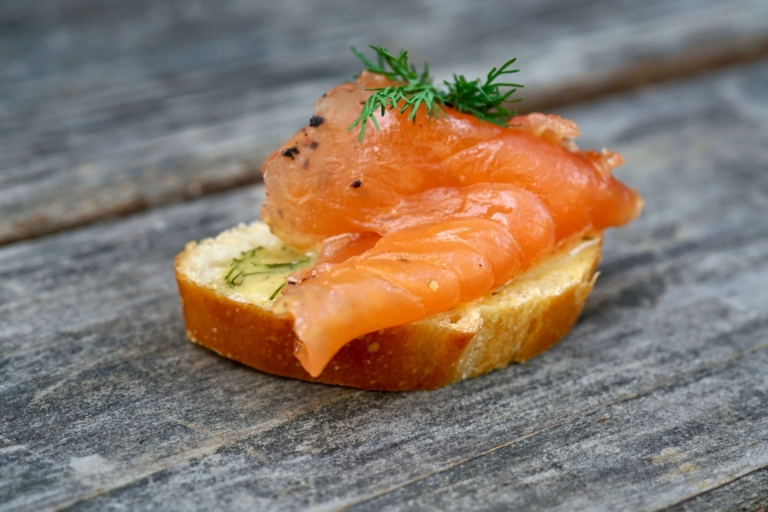Homemade Gravlax With Honey-Mustard Dill Sauce

Gravlax is a huge favorite of both mine and my husband. Honestly, I prefer to eat salmon like this or sashimi-style rather than cooked. The most common question I’ve heard about gravlax is how it is different from smoked salmon. Being a New Yorker (yes, even after living on the West Coast all these years I still consider myself one), it’s important to keep track of your salmon options. Gravlax refers to the traditional Scandinavian preparation of cured salmon. Like the real lox that bagel eaters often enjoy, gravlax is unsmoked. It is typically cured with a mixture including sugar, salt, spices, and dill. (Lox is very similar but with different spices.)
Because gravlax and lox are never cooked or smoked, they have a silky texture and translucency. Smoked salmon is a generic term. It can be made from any part of the fish, and it starts with salt curing or brining. The salmon can be covered in spices or a dry rub after curing, then smoked in one of two ways: either (1) cold-smoked where the salmon does not get cooked and is very similar to lox, or (2) hot smoked where the salmon is smoked with heat the same way meat is.
During the Middle Ages, gravlax was made by fishermen who salted salmon and buried it in sand to cure it. This explains the word “gravlax” itself, which is rooted in Scandinavian words “gräva” (which means “to dig”) and “lax” (which means “salmon”). A similar concept is employed today: to make gravlax, one buries the salmon in a dry rub of salt, sugar, and dill, and cures it for a few days. During this time, the salmon cures by osmosis. The moisture is wicked out of the fish flesh and the dry rub turns into a concentrated brine.
Gravlax is typically served in Nordic countries thinly sliced as an appetizer. My family and I will be traveling to Sweden soon and I can not wait to try the delicious varieties that await us in Stockholm. In my family, we eat gravlax on a baguette or pumpernickel bread with a sweet-tangy honey mustard dill sauce that my husband grew up eating. Gravlax is not difficult to make, but it takes time and patience. I like to cure mine for 3 days to get the perfect sweet melt-in-your-mouth flavor I love. This is a great appetizer to make for parties, especially because you do almost all of the work well in advance. Summer is the perfect time for tackling more involved cooking projects like this and if you are a big salmon fan like I am, you’ll be very glad you did.
Homemade Gravlax With Honey-Mustard Dill Sauce
Ingredients:
For the Gravlax:
- 2 filets (about 1 1/2-pound total) skin-on piece of sushi-grade salmon, pin bones removed
- 1/2 tablespoon cracked black peppercorns
- 2/3 cup sugar
- 1/3 cup kosher salt
- 3 tablespoons vodka
- 2 bunches of fresh dill
For the Honey-Mustard Dill Sauce:
- 3 tablespoons Dijon mustard
- 1 tablespoon good quality local honey
- 1 tablespoon cider vinegar
- 2 tablespoons Extra Virgin olive oil
- 1 tablespoon fresh dill, finely chopped
- Dash of freshly ground black pepper
Directions:
- For the Salmon: In a small bowl add the black peppercorns, sugar, and salt, and mix well and set near your workstation.
- Place the salmon skin-side down in a shallow baking dish. Drizzle the vodka over the fish flesh. Rub a handful of the sugar-salt mixture onto each piece of salmon. Then lay the dill on top.
- Carefully place one piece of salmon over the other piece so both flesh sides are now touching.
- Lay a large piece of plastic wrap down on the counter. Sprinkle a generous amount of the sugar-salt mixture in the middle of the plastic wrap, roughly the size/shape of the salmon. Place the salmon bundle on top of the sugar-salt mixture. Place another generous handful of the sugar-salt mixture on top of the salmon skin, and put any remaining on the sides. Tightly wrap the salmon bundle in plastic wrap. Wrap it again in a second layer of plastic wrap.
- Place the wrapped salmon bundle back in the baking dish. Place a second heavy baking dish (or some unopened cans) on top of the salmon to help compress it. Place in the refrigerator and allow to cure for 36 hours.
- Check the salmon roughly every 12 hours (or twice during the curing process) and gently turn it over for even curing. After 36 hours, the gravlax can be thinly sliced on the bias and served with or without the mustard sauce.
- For the Mustard-Dill Saice: In a small bowl add the mustard, honey, and vinegar. Slowly whisk in the olive oil. Add the chopped dill and a dash of black pepper. Mix well. Refrigerate until needed.





